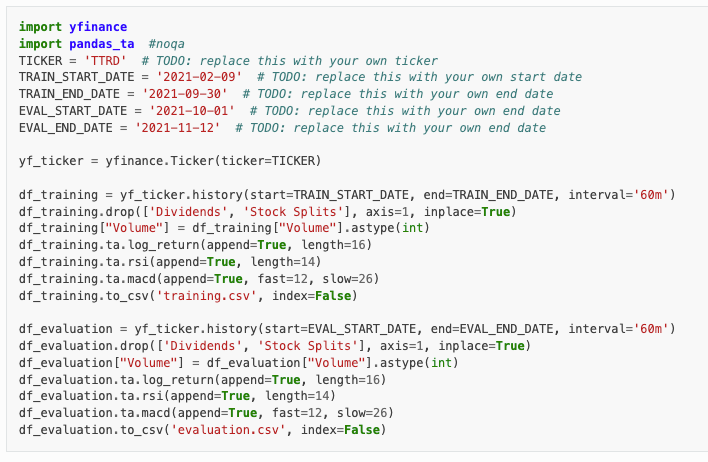2. Create a Maximum Sharpe Ratio Portfolio
We create a Maximum Sharpe Ratio model and then fit it on the training set.
portfolio_params are parameters passed to the Portfolio returned by the predict method.
We create a Maximum Sharpe Ratio model and then fit it on the training set.
portfolio_params are parameters passed to the Portfolio returned by the predict method.

3. Create a Benchmark
This is an inverse volatility portfolio that I'll compare my Max Sharpe portfolio against.
This is an inverse volatility portfolio that I'll compare my Max Sharpe portfolio against.

6. Cumulative Returns
In 1 line of code, we can get cumulative returns for our portfolio and benchmark.
In 1 line of code, we can get cumulative returns for our portfolio and benchmark.

7. Performance Tear Sheet
In 1 line of code, I get a comprehensive performance tear sheet to share with clients.
In 1 line of code, I get a comprehensive performance tear sheet to share with clients.

Want to learn how to build algorithmic trading strategies in Python (that actually work)?
👉 Join us live for our free training (500 seats): learn.quantscience.io/python-algorit…

👉 Join us live for our free training (500 seats): learn.quantscience.io/python-algorit…

• • •
Missing some Tweet in this thread? You can try to
force a refresh


















